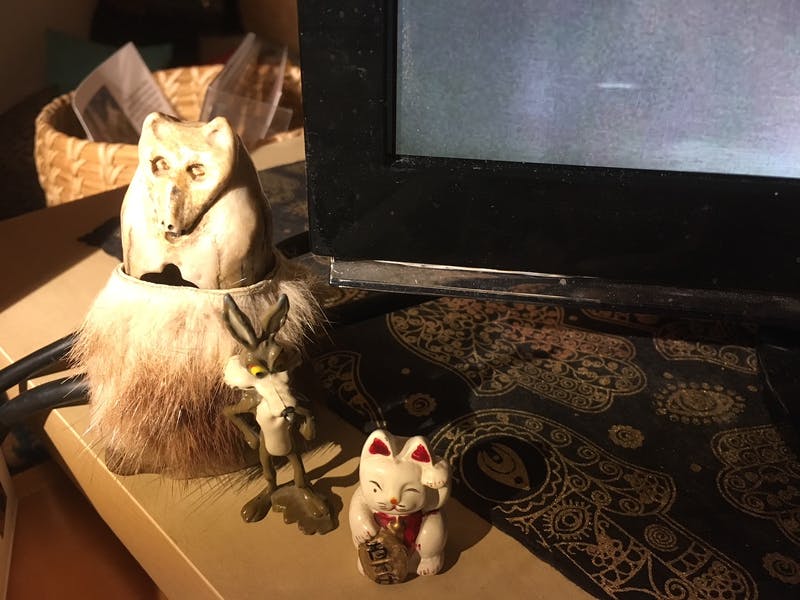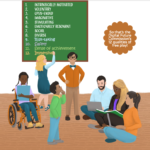I’ve been learning how to give hugs to a two-year-old at the end of video call. I’ve been learning how to bring a spirit of play and physicality to this environment I usually share with work colleagues, and more rarely, family and friends. When I have spent video time with friends, it’s typically been in short intervals. Learning to give hugs to a two-year-old at the end of the video call is certainly not something I ever aspired to learn. It is born of necessity. Today she drummed and I managed to dance to the beat using a few tiny characters I have on hand as stand-ins…it worked. We jammed.

Mindful digital life today is something very different from a few months ago, and yet it’s the same. Now more than ever we need to “critically engage technology.” The Zoom uproar is an example. We still need to read the fine print, like how to tune up our privacy settings for Zoom to prevent being “zoom bombed.” (Zoom has a new version with changes they’ve made so make sure to install when you see the screen asking you if you want to upgrade.)
We still need to nurture Co-Creative Conversations. Create plenty of safe spaces for check-ins to share how you’re doing amidst a more intense reliance on digital tools. Be authentic about the challenges you may be facing as an adult working from home, or struggling to fill out unemployment documents online. Ask questions of your tweens and teens gently and non-judgmentally about how they’re faring during this time. What are they experiencing as their biggest challenge? What are they worried about? What do they appreciate about this weird moment? The more you can be open about your own challenges and concerns, the more open they can be about what’s up for them. Yes, I know—easier said than done. It’s a practice. Sheltering in place is not an easy concept for young children. I’d love to hear how you’re talking about it with the young children in your life. I encourage you to bridge the social distance and write me.
One of my other foundational practices for creating a mindful digital life is: Nature as Default—Grow Your Sense of Place. These days, I experience my sense of place at a very micro level…I appreciate the small yard out my door, the magnificent old Bird of Paradise that is just beginning to bloom, the neighbor’s big white lab barking at my little red dog through the fence. On an early morning walk to the little nearby pocket park, I heard wild turkeys for the first time in my new neighborhood. Their voices were strangely comforting. In my previous home, I saw and heard wild turkeys daily. I have missed them. At the same time as I’m micro-local during these social distancing days, so many groups are sharing live cams around the world…so my sense of place extends to the Cornell bird cam at Sapsucker Woods pond. I keep it up in the corner of my second screen throughout my day as I “work from home” on my computer. Right now I’m watching a mother snow goose tend to her newly hatched young on the nest—a sight I have never before witnessed.
And a fourth guiding principle I highlight for nurturing a mindful digital life is: Future by Design—Identify and Clarify Essential Values and Goals. We won’t always be sheltering in place. This unique period does have limits, even if the end date is still very unclear. What if I turned towards this period as a container and asked myself, How can I live this from a deeper place? One of the personal values I identified is what kind of media I want to engage with…locked inside with an endless stream of programming, I got clear after a few days that digital nutrition really matters to me right now. I want to be more choiceful in what I watch and read. Clarifying that value helps me step away from my computer end of day and pick up (on my iPhone Kindle app) the book I am reading thanks to a friend’s recommendation: Wild Awake by writer Vajragupta about his solitary retreats in the wilds of the UK and Scotland over many years. I’m finding it a very peaceful way to wind down. Make values and goals a conscious topic of exploration with your family and friends during this time and revisit that topic weekly to allow for change of priorities.
A few posts that might be helpful
How to Help Teens Shelter in Place by Christine Carter, Greater Good Science Center
New York Times is free for teens over next 3 months.
My favorite Bay Nature magazine where I spotted this virtual group exhibition, Into the Oaks that will benefit The California Oaks program of the California Wildlife Foundation
Be well.


